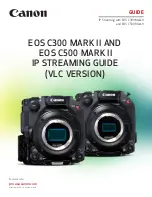
1
2
Figure 59: Angles and optical axis
1
Optical axis
2
Incidence angle
The following is important to get correct measurement results:
•
The laser line is orthogonal to the movement direction of the object and, if possi‐
ble, also aligned with the sensor rows in the camera.
•
The lens is focused so that the images contain a sharp laser line.
•
The laser is focused so that there is a sharp line on the objects, and the laser line
cross section covers a few rows on the sensor.
15.1.1
Occlusion
Occlusion occurs when there is no laser line for the 3D camera to detect in the sensor
image. Occlusion will result in missing data for the affected points in the measurement
result.
There are two types of occlusion:
Camera occlusion
When the laser line is hidden from the camera by the object.
Laser occlusion
When the laser cannot properly illuminate parts of the object.
Figure 60: Different types of occlusion
1
Camera occlusion
2
Laser occlusion
Adjusting the angles of the camera and the laser can reduce the effects of occlusion.
ANNEX
15
8020774/14IM/2019-07 | SICK
O P E R A T I N G I N S T R U C T I O N S | Ranger3
79
Subject to change without notice










































